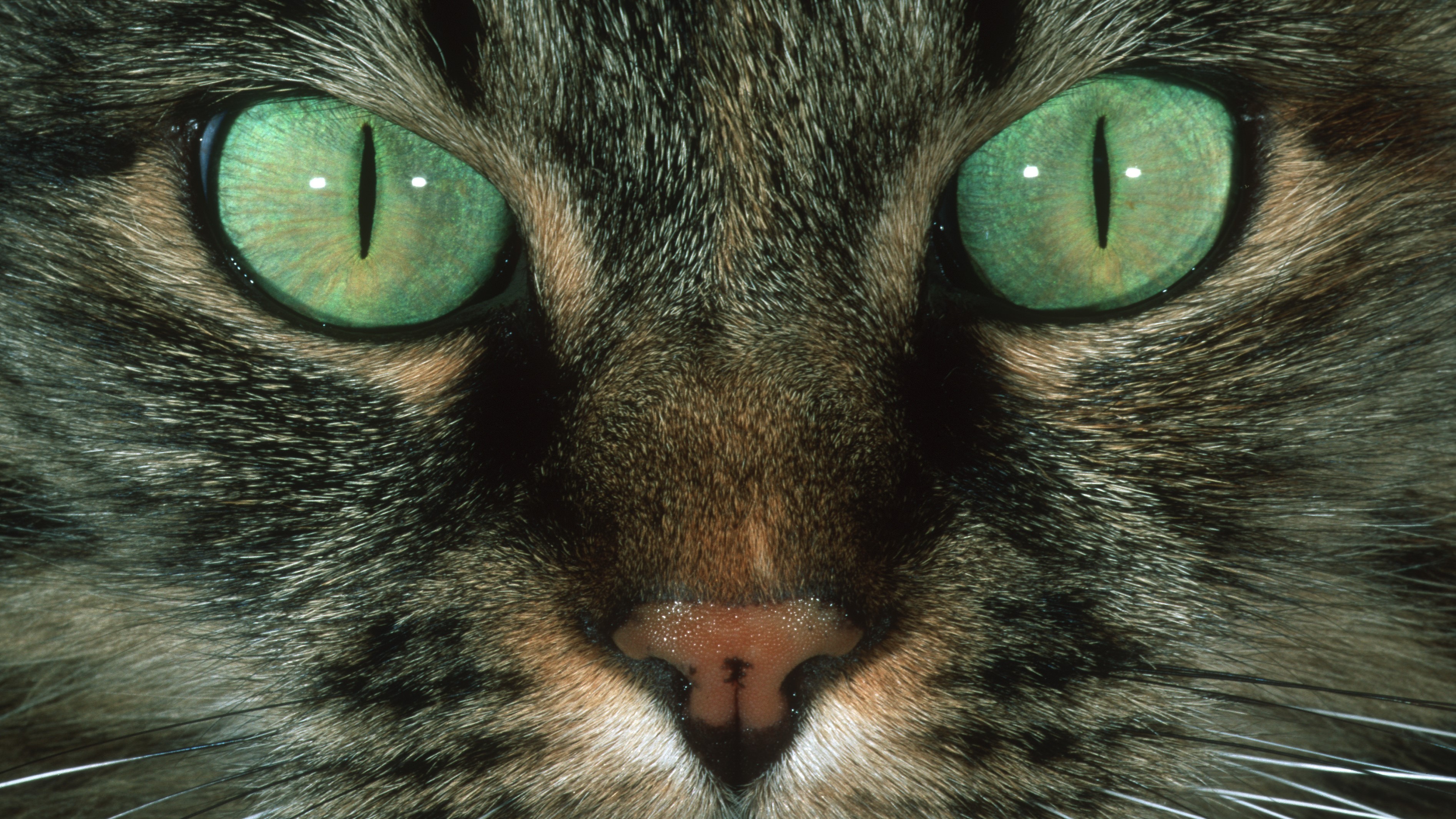Cats' dazzling eye colors may come from 1 unusual ancestor
The cat family has an amazing array of eye colors stemming from one unusual ancestor.

The evolution of eye color in cats has been mapped for the first time, and researchers found that one unusual ancestor is responsible for the feline family's dazzling variety of peepers — from yellow-eyed tigers to blue-eyed snow leopards.
In the new study, scientists identified different eye colors in living cats and used a computer model to predict where they evolved on the feline family tree. Their model found that the ancestor of all cats must have had gray and brown eyes, and the gray enabled other colors to later emerge.
Cats' closest living relatives, including linsangs, hyenas and genets, all have brown eyes, suggesting the common ancestor of all these groups had brown eyes too. But something changed with the arrival of the cat (Felidae) family millions of years ago, evident in the variety of eye colors we see today.
"Suddenly, you see an explosion of [eye color] diversity," lead author Julius Tabin, a graduate researcher and doctoral student at Harvard University, told Live Science. "You get blue eyes and green eyes and yellow eyes all popping up."
Tabin posted his findings on the preprint database bioRxiv on Oct. 9, which means they haven't been peer-reviewed. However, other researchers have reacted positively to the study so far.
Related: Cats have nearly 300 facial expressions, including a 'play face' they share with humans
"I love this paper," Juan Negro, an evolutionary biologist at the Doñana Biological Station in Spain who was not involved in the study, told Science earlier this month. "Eye coloration in cats is something that, surprisingly, hasn’t been approached by scientists before."
Sign up for the Live Science daily newsletter now
Get the world’s most fascinating discoveries delivered straight to your inbox.

Tabin and his co-author documented the eye colors of more than 40 cat species by looking at cat images online. They then combined this data with what is already known about the evolutionary relationships between living and extinct cats to predict the eye color of the first cats using a statistical model.
The images of the living cats revealed that excluding selectively bred domestic cats, there are five major eye colors in the Felidae family today: Brown, gray, yellow, green and blue. Amur leopards (Panthera pardus orientalis), rusty-spotted cats (Prionailurus rubiginosus), southern African wildcats (Felis lybica cafra) — a subspecies of the Afro-Asiatic wildcat, which is the ancestor of domestic cats — and two species of lynx can have up to four different eye colors, while most others have two or three.
The presence of two pigments called eumelanin and pheomelanin determines what eye color a cat gets, according to the study. Brown eyes have more eumelanin; yellow eyes have more pheomelanin; and gray eyes have moderate amounts of both but not enough of either to become another color. Blue and green eyes have lower levels of both.
Tabin and his co-author concluded that gray eyes emerged because of a random mutation in the ancestor of all cats — which they did not identify — that reduced eumelanin, and this became a stepping stone between brown eyes and the other colors. However, what drove the other colors to emerge is an open question.
Tabin said they didn't find convincing correlations between eye color and other physical characteristics, behaviors or habitat to explain the different colors, so he suspects it's related to mate choice preference — some researchers argue that this sexual selection is the reason humans have different eye colors.
"It doesn't seem like it's a lifestyle thing, and so that's why I fall back on sexual selection," Tabin said.
However, researchers not involved in the study have suggested different possible explanations.
Shu-Jin Luo, an evolutionary geneticist at Peking University in China, told Science that eye color could be a "side effect" of selection for coat color, while Rosalyn Price-Waldman, an evolutionary biologist and doctoral candidate at Princeton University, suggested that as long as the eye colors aren't detrimental to the cats, they could evolve randomly.

Patrick Pester is the trending news writer at Live Science. His work has appeared on other science websites, such as BBC Science Focus and Scientific American. Patrick retrained as a journalist after spending his early career working in zoos and wildlife conservation. He was awarded the Master's Excellence Scholarship to study at Cardiff University where he completed a master's degree in international journalism. He also has a second master's degree in biodiversity, evolution and conservation in action from Middlesex University London. When he isn't writing news, Patrick investigates the sale of human remains.









